The nutritional status affects the complete blood count of goats experimentally infected with Haemonchus contortus
- PMID: 29121941
- PMCID: PMC5679319
- DOI: 10.1186/s12917-017-1248-4
The nutritional status affects the complete blood count of goats experimentally infected with Haemonchus contortus
Abstract
Background: Gastrointestinal nematode (GIN) remains the most important pathogenic constraint of small ruminant production worldwide. The improvement of the host immune response against GIN though breeding for improved animal resistance, vaccination and nutritional supplementation appear as very promising methods. The objective of this study was to investigate the effect of four nutritional status differing in protein and energy levels (Hay: 5.1 MJ/Kg of dry matter (DM) and 7.6% of crude protein (CP), Ban: 8.3 MJ/Kg of DM and 7.5% of CP, Soy: 7.6 MJ/Kg of DM and 17.3% of CP, BS: 12.7 MJ/Kg of DM and 7.4% of CP) on the haematological disturbances due to Haemonchus contortus infection in Creole kid goats.
Results: No significant effect of the nutritional status was observed for faecal egg count (FEC) but the experimental infection induced haematological disturbances whose intensity and lengthening were dependent on the nutritional status. A transient marked regenerative macrocytic hypochromic anaemia as revealed by a decrease of packed cell volume (PCV), red blood cells (RBC) and hemoglobin and an increase of reticulocytes was observed in all infected groups except Hay. In this latter, the anaemia settled until the end of the experiment. Furthermore, H. contortus induced a thrombocytopenia significantly more pronounced in the group under the lowest nutritional status in term of protein (Hay and Ban). A principal component analysis revealed that the variables that discriminated the nutritional status were the average daily gain (ADG) and the PCV, considered as measures of the level of resilience to H. contortus infection. Moreover, the variables that discriminated infected and non-infected animals were mostly related to the biology of RBC (i.e. size and hemoglobin content) and they were correlated with FEC.
Conclusions: The severity and the lengthening of the regenerative anaemia and the thrombocytopenia induced by H. contortus have been affected by the nutritional status. The protein enriched diets induced resilience to the infection rather than resistance. This suggests that resilience is associated with an improved regenerative capacity of the bone marrow. However, this needs to be further investigated to understand the relationships between resistance, resilience and dietary supplementation.
Keywords: Blood cells; Gastrointestinal nematode; Goats; Nutrition.
Conflict of interest statement
Competing interest
The authors declare that they have no competing interests.
Ethics approval and consent to participate
All animal care, handling techniques, procedures as well as license for experimental infection and blood sampling were approved by the current law on animal experimentation and ethics (HC-69-2014-1 from the Animal Care and Use Committee of French West Indies and Guyana), according to the certificate number A-971–18-02 of authorization to experiment on living animals issued by the French Ministry of Agriculture, before the initiation of the experiment.
Consent for publication
Not applicable.
Publisher’s Note
Springer Nature remains neutral with regard to jurisdictional claims in published maps and institutional affiliations.
Figures
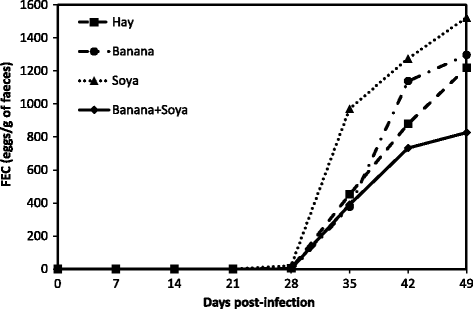
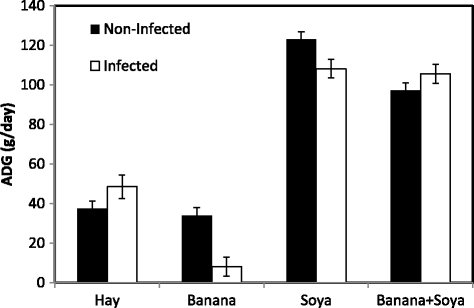
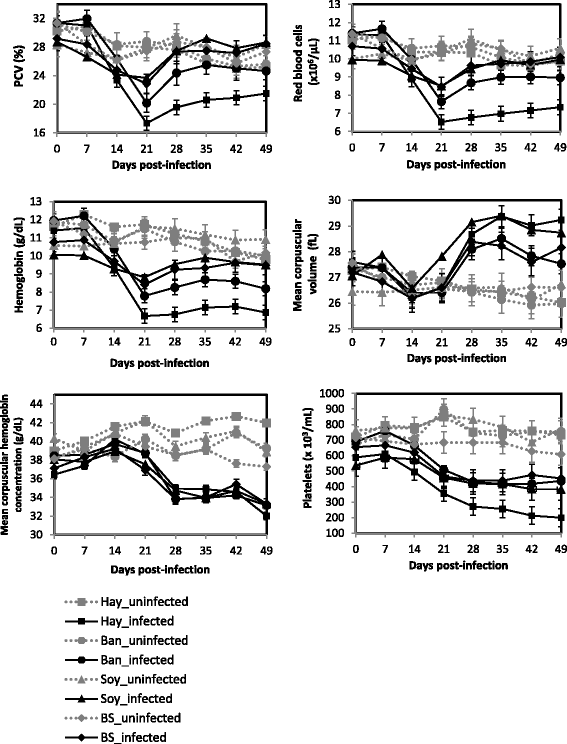
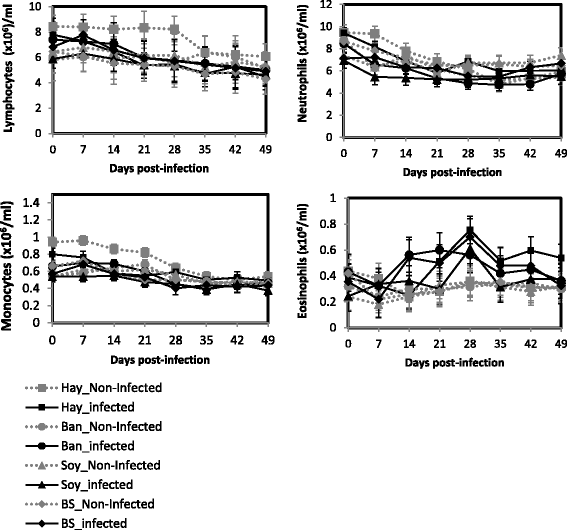
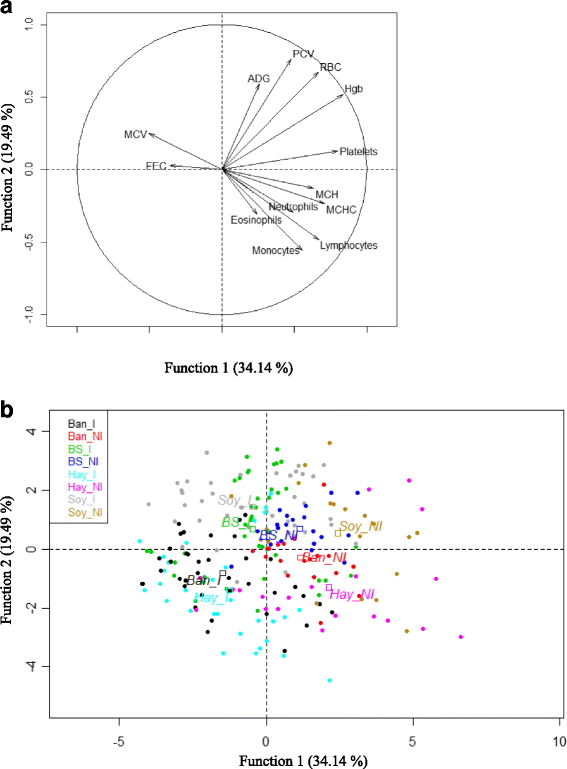
Similar articles
-
Effect of the nutritional status of Creole goats on the density-dependent prolificacy of Haemonchus contortus.Vet Parasitol. 2019 Dec;276:108973. doi: 10.1016/j.vetpar.2019.108973. Epub 2019 Nov 9. Vet Parasitol. 2019. PMID: 31785456
-
Impact of the post-weaning nutritional history on the response to an experimental Haemonchus contortus infection in Creole goats and Black Belly sheep.Vet Parasitol. 2016 Mar 15;218:87-92. doi: 10.1016/j.vetpar.2016.01.015. Epub 2016 Jan 19. Vet Parasitol. 2016. PMID: 26872933
-
Genetic analysis of the potential role of IgA and IgE responses against Haemonchus contortus in parasite resistance of Creole goats.Vet Parasitol. 2012 May 25;186(3-4):337-43. doi: 10.1016/j.vetpar.2011.11.071. Epub 2011 Dec 6. Vet Parasitol. 2012. PMID: 22188980
-
Diagnosis, Treatment and Management of Haemonchus contortus in Small Ruminants.Adv Parasitol. 2016;93:181-238. doi: 10.1016/bs.apar.2016.02.024. Epub 2016 May 10. Adv Parasitol. 2016. PMID: 27238006 Review.
-
Advances in the Development of Anti-Haemonchus contortus Vaccines: Challenges, Opportunities, and Perspectives.Vaccines (Basel). 2020 Sep 22;8(3):555. doi: 10.3390/vaccines8030555. Vaccines (Basel). 2020. PMID: 32971770 Free PMC article. Review.
Cited by
-
Platelet count has a U-shaped association with mortality in hemodialysis patients.Sci Rep. 2024 Nov 4;14(1):26572. doi: 10.1038/s41598-024-77718-7. Sci Rep. 2024. PMID: 39496692 Free PMC article.
-
Effects of Medicinal Plants and Organic Selenium against Ovine Haemonchosis.Animals (Basel). 2021 May 5;11(5):1319. doi: 10.3390/ani11051319. Animals (Basel). 2021. PMID: 34063070 Free PMC article.
-
An ethnopharmacological approach to evaluate antiparasitic and health-promoting abilities of Pueraria tuberosa (Willd.) DC. in livestock.PLoS One. 2024 Jul 19;19(7):e0305667. doi: 10.1371/journal.pone.0305667. eCollection 2024. PLoS One. 2024. PMID: 39028725 Free PMC article.
-
Mixed Grazing and Dietary Supplementation Improve the Response to Gastrointestinal Nematode Parasitism and Production Performances of Goats.Front Vet Sci. 2021 Apr 23;8:628686. doi: 10.3389/fvets.2021.628686. eCollection 2021. Front Vet Sci. 2021. PMID: 33969031 Free PMC article.
-
Supplementation with rumen-protected proteins induces resistance to Haemonchus contortus in goats.Sci Rep. 2019 Feb 4;9(1):1237. doi: 10.1038/s41598-018-37800-3. Sci Rep. 2019. PMID: 30718601 Free PMC article.
References
-
- Bishop SC, Morris CA. Genetics of disease resistance in sheep and goats. Small Rumin Res. 2007;70(1):48–59. doi: 10.1016/j.smallrumres.2007.01.006. - DOI
-
- Papadopoulos E. Anthelmintic resistance in sheep nematodes. Small Rumin Res. 2008;76(1–2):99–103. doi: 10.1016/j.smallrumres.2007.12.012. - DOI
-
- Baker RL, Gray GD. Worm control for small ruminants in tropical Asia. Australian Centre for International Agricultural Research (ACIAR) 2003;Monograph 113:63–95.
MeSH terms
Substances
Grants and funding
LinkOut - more resources
Full Text Sources
Other Literature Sources
Medical
Miscellaneous

